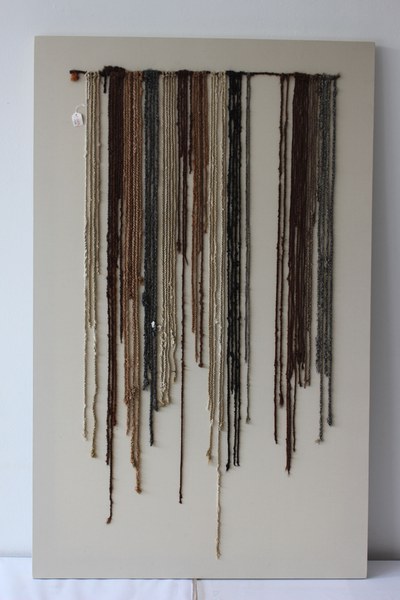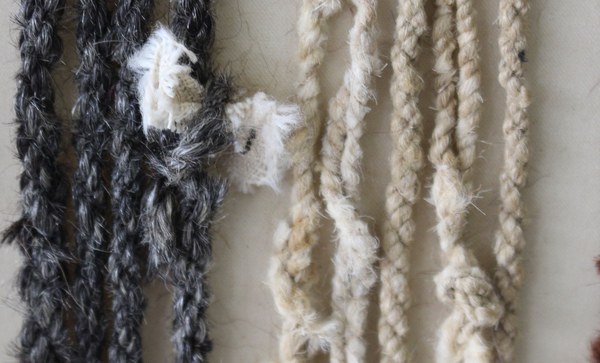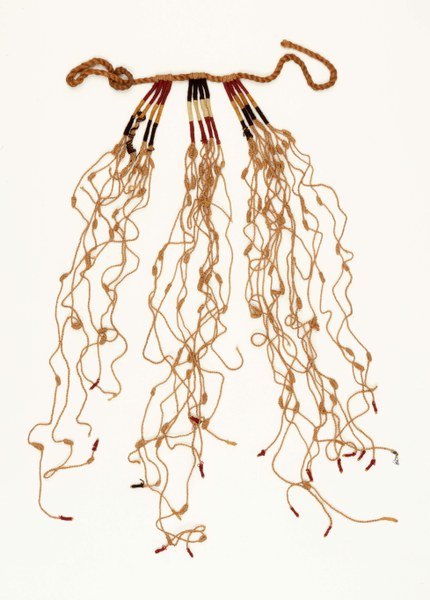
Post-Inka Khipus (1534 CE–Present)
“Y en cada valle hay esta cuenta hasta hoy día . . .” (Pedro Cieza de Leon 1967 [1553]: 37)
“In each valley there is still this system of accounting . . .” (Pedro Cieza de León 1959 [1553]: 175)
By the fall of the Inka Empire, khipus were an established component of Andean life. The Spanish Crown accepted them as legal documents in court cases throughout the seventeenth century and used them to incorporate information on the Inka and other indigenous populations into the colonial administrative system. This ended when the Third Council of Lima (1583) mandated the universal destruction of idolatrous khipus while also promoting the adaptation of the khipu for Christian ecclesiastical and evangelical purposes.
Khipu production continued well into the twentieth century to record work obligations within haciendas and indigenous communities. Usage has since declined but probably still continues into the present among herders to manage their livestock. Many post-Inka khipus display innovations not seen in Inka khipus, like the use of thicker yarns to show higher quantitative values and the nearly exclusive use of overhand knots, including clusters of ten to represent 100. In their basic structure, however, they perpetuate the Inka tradition of using positioned knots to denote numerical systems.
Post-Inka Khipu Types
Inka-Style
The use of what scholars call Inka-style, a pendant-type khipu, survived into the twentieth century in community settings. Some post-Inka pendant-type khipus use significantly fewer pendant and subsidiary cords, and many have objects—tufts of raw fiber, fragments of hide or cloth, cloth figurines, pompoms, bits of produce—tied onto them. They do not use long knots but use loops, knot clusters, hierarchical placement and/or cord thickness to signify numeral hierarchy (1s, 10s, 100s, etc.).
Canuto Type

Canuto khipus have pendant cords wrapped with dyed camelid fiber reminiscent of Wari khipus. Their pendant cords do not have subsidiary cords, and most have a Z twist with knotted or wrapped distal ends. They have long knots typical of Inka khipus, but they usually do not adhere to the base-10 positional system. Canuto khipus are made of a diversity of fibers available in colonial Peru, including natural cotton, maguey, sheep wool, and horse or human hair.
Herding Type
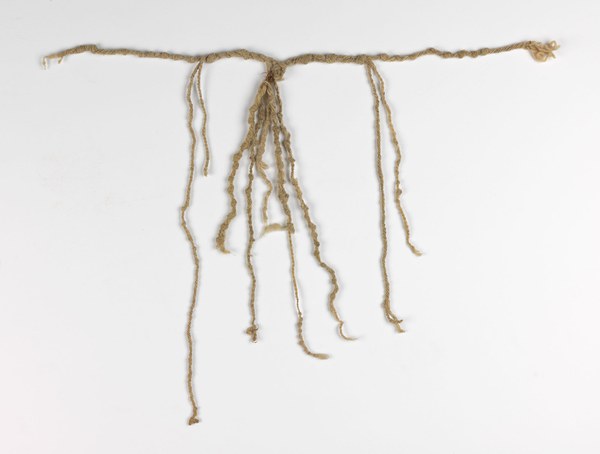
Herding khipus have long been used by pastoralists in highland communities and were first described by ethnographers in the nineteenth and twentieth centuries. Some are a single cord, while others consist of a cord that is doubled and plied but leaves two ends free to serve as pendants. Despite their simple form, they nonetheless show great variety in morphology and numerical notation conventions. Herding khipus exclusively employed overhand knots in a base-10 numerical system that used cord thickness and position of knots and knot clusters to determine numerical values.
Khipu Boards
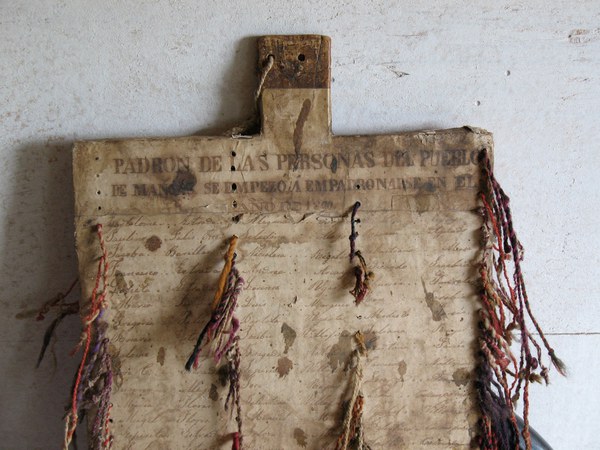
Khipu boards are a sixteenth-century khipu-like device developed principally by the Catholic Mercedarian Order. The paddle-like boards have colored, plied, and knotted cords that pass through holes drilled in the board with the names of community members written in Spanish next to the cords. Khipu boards tracked such information as members’ attendance at catechism, the use of ritual implements and clothing, the quality of an individual's work, and even the degree of enthusiasm they showed.
